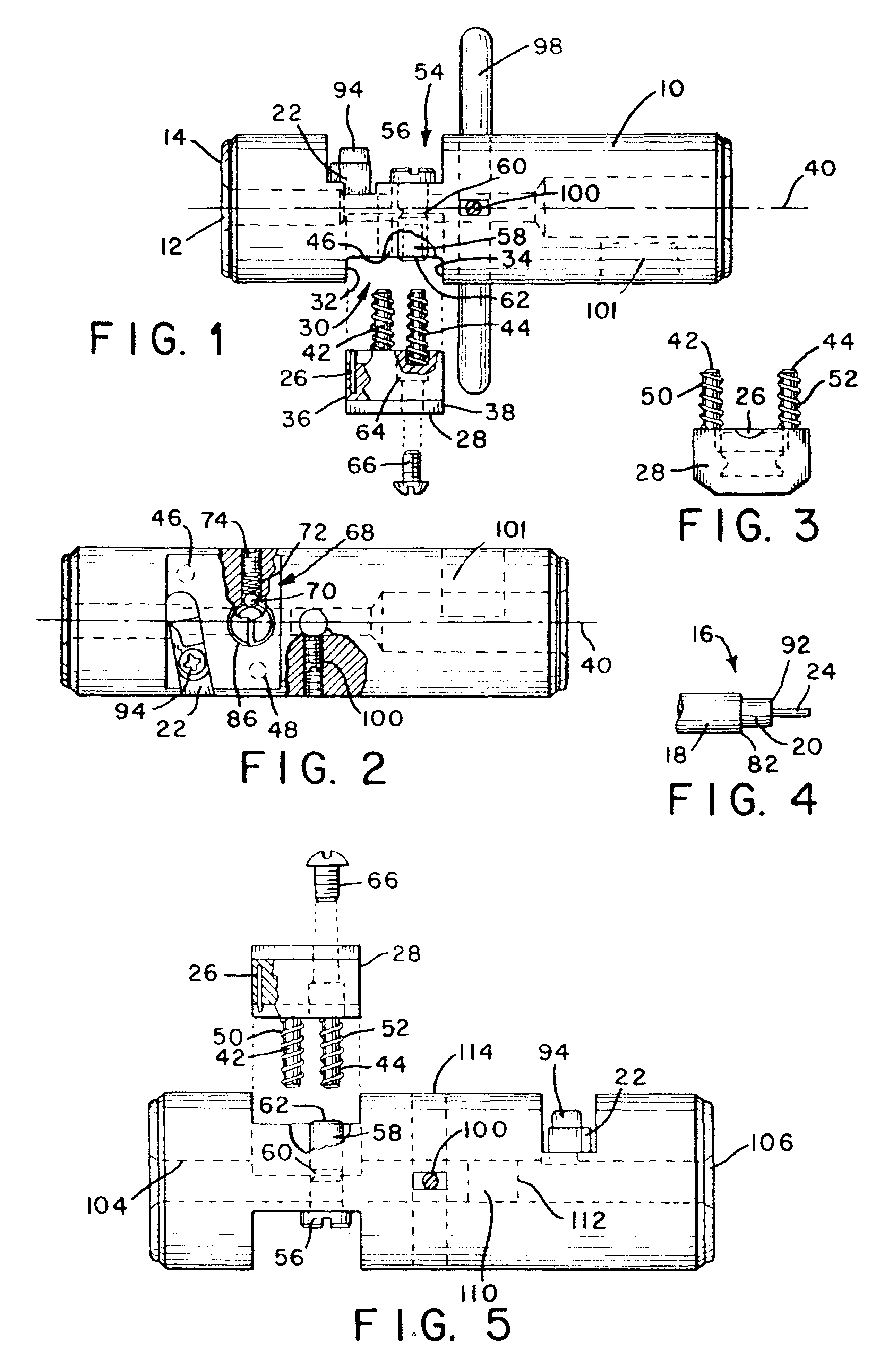Compound coaxial cable stripping tool
a technology of coaxial cable and tool, which is applied in the field of coaxial cable stripping tool, can solve the problems of difficult cutting of coaxial cable, ragged transverse edge along the cut, and difficult cutting cleanly through multiple layers of thin shielding material
- Summary
- Abstract
- Description
- Claims
- Application Information
AI Technical Summary
Benefits of technology
Problems solved by technology
Method used
Image
Examples
Embodiment Construction
)
In describing the preferred embodiment of the present invention, reference will be made herein to FIGS. 1-9 of the drawings in which like numerals refer to like features of the invention.
Referring to FIG. 1, the coaxial cable stripping tool of the present invention includes a cylindrical tool body 10 having an axial opening 12 in end 14 of the tool body. As can be seen in FIG. 4, which shows a completed stripping cut, the tool is designed to produce a stepped cut on coaxial cable 16. The coaxial cable includes an outer jacket 18 having an outside diameter just slightly smaller than the inside diameter of axial opening 12, allowing the cable to smoothly enter axial opening 12 where it is supported by the inner walls during cutting.
As the tool is rotated relative to the cable, outer conductor 20 is exposed by a double-edged cutting blade 22 (see FIG. 2), which removes only the outer jacket 18. The cut required to expose inner conductor 24 is made by a planar cutting blade 26 (see FIG...
PUM
| Property | Measurement | Unit |
|---|---|---|
| sizes | aaaaa | aaaaa |
| conductive | aaaaa | aaaaa |
| distance | aaaaa | aaaaa |
Abstract
Description
Claims
Application Information
 Login to View More
Login to View More - R&D
- Intellectual Property
- Life Sciences
- Materials
- Tech Scout
- Unparalleled Data Quality
- Higher Quality Content
- 60% Fewer Hallucinations
Browse by: Latest US Patents, China's latest patents, Technical Efficacy Thesaurus, Application Domain, Technology Topic, Popular Technical Reports.
© 2025 PatSnap. All rights reserved.Legal|Privacy policy|Modern Slavery Act Transparency Statement|Sitemap|About US| Contact US: help@patsnap.com



